Top Amazing Fun Facts About the Ganga River In 2023
Written by Sthitee Mohanty, senior writer
The Ganga originates at a place called Gaumukh in Uttarakhand, which is about 21 km southeast of the Gangotri glacier in the Himalayas. The glacier is a sacred Hindu pilgrim spot….
The Ganga River (also called the Ganges) is one of the major rivers of the Indian subcontinent. Originating in the western Himalayas, the Ganga is the longest river in India.
A sacred river for the Hindus, many believe that Ganga water has magical powers that can cure ailments.
The Ganga, the Gangetic Basin, and its river delta form a large part of Indian culture and identity (a river basin is the area of land that is irrigated by a river and its tributaries).
The Ganges River Basin is known as the Ganges-Brahmaputra-Meghna (GBM) River Basi.
Here’s a quick look at the key facts about the Ganga river
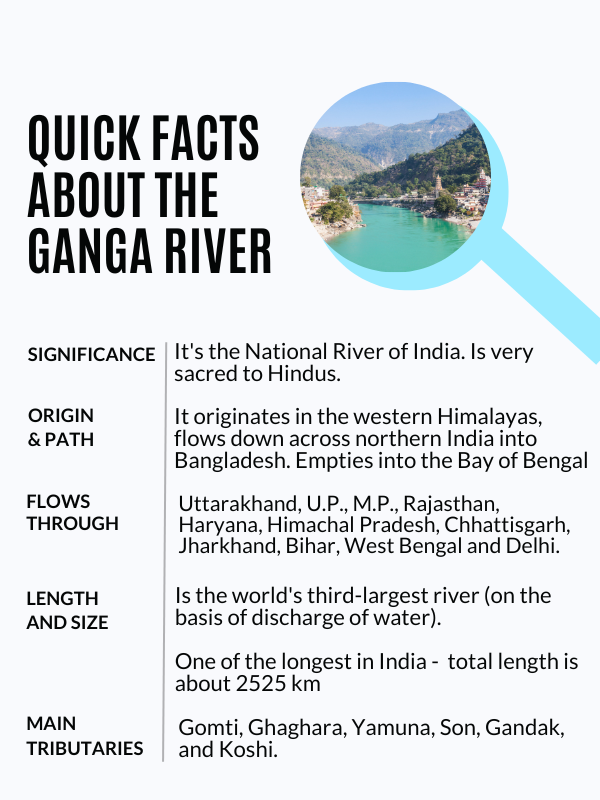
Read on to know more information about the Ganga river and fun facts about the Ganga river.
Where is the Ganga river located?
The Ganga originates at a place called Gaumukh Uttarakhand, which is about 21 km southeast of the Gangotri glacier in the Himalayas. The glacier is a sacred Hindu pilgrim spot.
But, here’s the thing – the river that originates at Gaumukh is called Bhagirathi river, and is technically not the Ganga yet- it’s one of the headwaters of the Ganga.
Bhagirathi River is formed out of the melted ice of the Gangotri glacier. As this river flows down, it joins another river called the Alaknanda River at a place called Devprayag, and this is when it officially becomes the Ganga River.
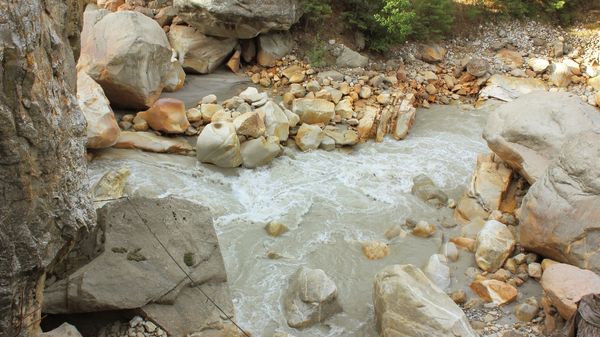
The Ganga carries a large amount of sediment and deposits it along its shores. This is one of the reasons behind the very fertile soil of the Gangetic Plain.
The Ganga River Basin
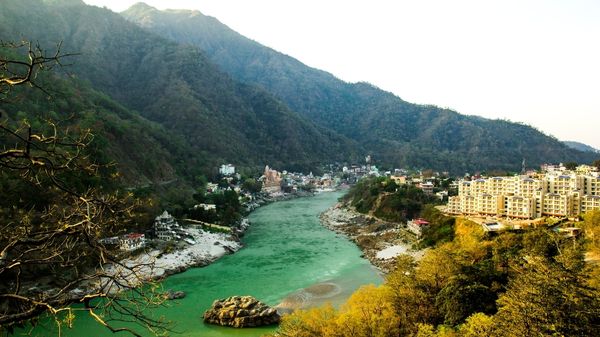
Ganga has a densely populated river basin. It is incredibly bio-diverse, supporting myriad wildlife like – river dolphins, otters, freshwater turtles (different from sea turtles), and gharials (small crocodile-like reptiles with bulbous structures on their snouts)
Key Facts about the Ganga River Basin
| World’s most populous river basin – home to more than 600 million Indians, close to half the country’s population |
| Covers an area of 860,000 sq km across eleven states |
| Provides more than one-third of India’s surface water |
| 90 percent of Ganga water is used for irrigation |
.Moreover, the Ganga carries a large amount of sediment and deposits it along its shores. This is one of the reasons behind the very fertile soil of the Gangetic Plain.
The Gangetic Plain is an intensely cultivated region, with the Ganga being a major irrigation source for cultivators. The river provides fresh water to the millions living around it and is also used for fishing, transport, and even religious purposes.
Nearly 80% of the Ganges river basin is in India, the rest is in Nepal, China, and Bangladesh.
A sacred river
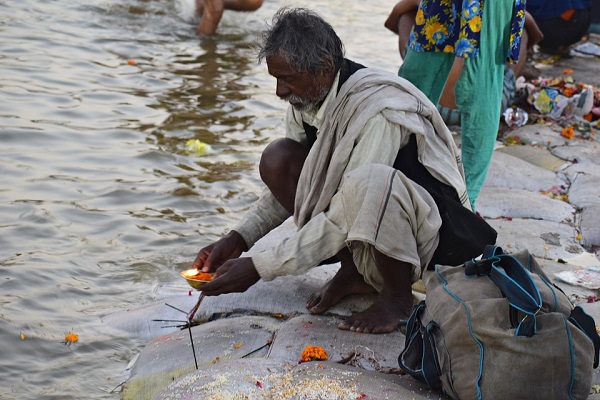
As mentioned earlier, the Ganga river is sacred to many Indians. The river holds a prominent place in Hindu folklore and is called a Goddess and Mother Ganga. It appears prominently in the later three Vedas (Sama, Yajur, Atharva). Ganga appears in the epic Mahabharata as well!
Did you know that in the Mahabharata, the Ganga river is personified as a Goddess who marries a king? She even has a son, Lord Bhishma!
It is also said that the river resides in the locks of Lord Shiva, restrained by the tight coils from flooding the earth. The river is also a sacred site for funereal rites for Hindus.
Threats to the Ganga River

Despite its importance and significance, the Ganga faces many threats today.
Pollution has been a continuous problem for the Ganga – it is now the fifth most polluted river in the world.
Increasing irrigation demands are putting strain on the river for water is being used up very quickly for agricultural purposes.
More construction near the river bank also poses a threat.
All these factors and many others threaten the rich biodiversity of the Ganga river.
Pollutants of the Ganga River
- Untreated sewage and human wastes
- Untreated Industrial effluents
- Agricultural runoff – contaminated water from cultivated fields
- Animal and human carcasses
- Materials of religious rituals like flowers, banana leaves, etc.
Did you know that the Gangetic River Delta is the largest in the world? Also known as the Ganges-Brahmaputra Delta, the Sundarbans Delta, or the Bengal Delta, this is the largest in the world.
Read on to learn more fun facts about the Ganga river!
Top 20 Fun Facts About the Ganga river In 2023
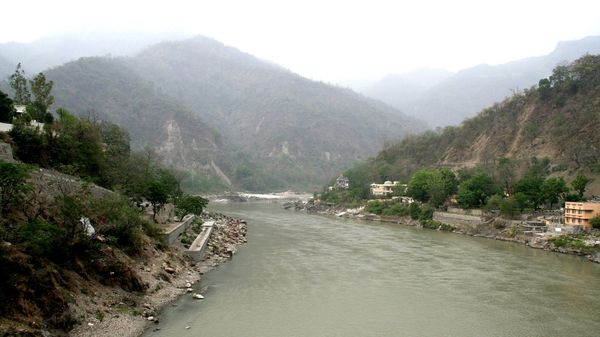
Now for some fun facts about the Ganga river!
1. The Ganga is not just a single river – it is a river system! The main river Ganga has many river tributaries like the Yamuna, the Brahmaputra, the Son, the Kosi, the Gomti, etc.
2. The Ganga river is shifting from its course – it’s changing course by a few kilometers. Due to the deposition of heavy silt, the soil of the river bank shifts. Thus the river changes course.
3. The river cleans itself of microbes like bacteria! The amazing fact about Ganga is that its waters have antibacterial agents like bacteriophages (proteins that kill bacteria) that kill bacterial pathogens in the water. This is why they say that the Ganga has magical healing powers.
4. The Ganga river water does not spoil if kept in a container for many years! This again is because of the presence of anti-bacterial agents which is what gives it a magical self-healing property.
5. A majority of India’s pilgrimage sites are located around the Ganga – especially the famous city of Varanasi.
Other sites include Haridwar, Devprayag, Rishikesh, Allahabad, etc.
6. The river supports numerous ecosystems – it supports a mountain ecosystem at its glacier of origin; it supports a freshwater ecosystem in the plains; it supports a wetland ecosystem in its delta; it supports an estuarine ecosystem when it enters the Bay of Bengal.
7. The river contains a total of 140 fish species and 90 amphibian species.
8. It’s home to freshwater dolphins, an endangered species as per the IUCN Red List.

9. The Ganges river is home to the Ganges shark, a critically endangered species on the IUCN Red List.
10. It feeds water to the Sunderbans, the world’s largest continuous mangrove forest.
11. The earliest recorded use of the Ganga river for irrigation purposes is by the Greek traveler Megasthenes, in his book Indica.
12. The Ganga is the largest river in India.
13. It’s not just an Indian river, but is called a transboundary river, meaning that it flows through countries – it flows through India, Bangladesh, and Nepal.
14. The Ganga is called the Padma in Bangladesh.
15. The Ganga River Basin is the most populated in the world.
16. The Ganga river has the highest number of dams, small and big, in India. Tehri dam in Uttarakhand on the Ganga river is the tallest dam in India.
17. The Kumbh Mela, which occurs once every 12 years, is a sacred Hindu festival celebrated in four Indian cities, one of them being Haridwar on the Ganga river.
18. The Ganga was designated as The National River of India in 2008 by former Indian Prime Minister Dr. Manmohan Singh.
19. The Ganga Action Plan 1986 is a government of India policy for decreasing the pollution level of the river.
20. The Ganga river has a new luxury river cruise called Ganga Vilas, sponsored by the Government of India launched in the year 2023.
States Ganga flows through
The Ganga river drains one-fourth area of India’s land mass. The river flows through the following Indian States:
| Uttar Pradesh | 294,364 km² |
| Madhya Pradesh | 198,962 km² |
| Bihar | 143,961 km² |
| Rajasthan | 112,490 km² |
| West Bengal | 71,485 km² |
| Haryana | 34,341 km² |
| Himachal Pradesh | 4,317 km² |
It even flows across the capital Delhi.
The river has long supported the people of India. It is the heartland of North India, being the center of many successful civilizations like the Aryan settlements, the Maurya Empire, and even the Mughal Empire! Life continues to boom in and around the Ganga river.
Some river facts explained
Here we define a few terms mentioned in the fun facts about the Ganga river!
What is a perennial river?
The Ganga is a perennial river.
A perennial river has water throughout the year and never dries up. It generally has a glacier as its source. Both the melting glacier and rainfall contribute to the river.
What is a river basin?

A river basin is the entire area of land irrigated by a river and its tributaries. The land is crisscrossed by interconnected rivers and streams.
The Gangetic river basin is a foreland basin (a river basin that develops parallel to a mountain range) with alluvial soil (soil made highly fertile by continuous silt deposition by rivers).
What is a river delta?

River deltas form when the river is entering another body of water like a lake, or an ocean.
The Ganga river forms a diverse river delta when it enters the Bay of Bengal.
Together with the Indus river, the Ganga river forms the Indo-Gangetic Plain. It is the world’s largest interconnected river-irrigated agricultural system. It is crucial for India’s agricultural sector.
The Ganga river delta is called the Green delta, one of the most fertile regions of the world. It has a large variety of flora and fauna: it has an untouched tidal forest of mangroves; it is home to the Bengal tiger.
How long is the Ganga river?
The Ganga River is 2,510 km long.
While starting in the Gangotri Glacier, the Ganga river has two main tributaries. When the river Alakananda descending from Gumukha joins the river Bhagirathi at Devprayag, the resulting river is called the Ganga.
Further on, the Ganga has the right bank tributaries the Yamuna river and the Son river. The left-bank tributaries are the Gomti river, the Ghaghara river, the Gandak river, and the Kosi river.
Further south, the Brahmaputra joins the Ganga. It finally enters Bangladesh as the Padma river.
The volume of the Ganges changes with a change in seasons. The melting Himalayan snows feed the river from April to June. in the July-September monsoons, there are floods.
The growth of the Ganga river basin is dominated by the rate of silt deposition by the river Ganga. Silt is fine sedimentary material composed of sand, clay, etc, formed by the constant erosion of rocks by flowing river waters.
The growth of the Ganga river delta is controlled by tidal movements. Both the sea and the river deposit sediments in the delta.
The Indian Government plans to utilize the Ganga as an inland transport waterway. It would boost connectivity within the country, making trade and transport easier and more efficient. It would increase river tourism opportunities and generate more jobs.
Phases of Ganga Action Plan (GAP)
| PHASE 1 | PHASE 2 |
| Started in 1984, and closed in 2000 | Started in 1993 |
| 3 states targeted: UP, W.Bengal, Bihar | 7 States targeted: Uttarakhand, UP, Bihar, Jharkhand, W. Bengal, Haryana, & Delhi |
In 2014, the Government of India flagged off the Namami Gange Project.
Yet, it should be kept in mind that the Ganga river is a sensitive region. It is home to species with dwindling numbers. A large number of the Indian population depends on the river for their livelihoods.
The Ganga river also holds a significant role in Indian culture. A vast amount of Hindu traditions revolve around the Ganga river, Mother Ganga.
Further developments in and around the river need to be carried out with utmost care. One mistake may have numerous repercussions.
Hope you enjoyed knowing information about the Ganga river.
Let us know if you have more fun facts about the Ganga river to share!
You May Also Like
Why Does the Moon Look Bigger Sometimes?
Fun Facts About The Red Fort
Facts About the Snow Leopard
Better Your Child’s G.K. In 3 Minutes – Get This Free Newsletter
Get fun facts, simple and easy news, quizzes, and lots of other interesting things to read in your mailbox – for free! It’s what we call GK-on-the-go!
I Kid You Not now has a large readership across India and also parts of the world. If you want to write for us, you can submit your story here. You can also apply to become a news anchor. Apply here




Comments